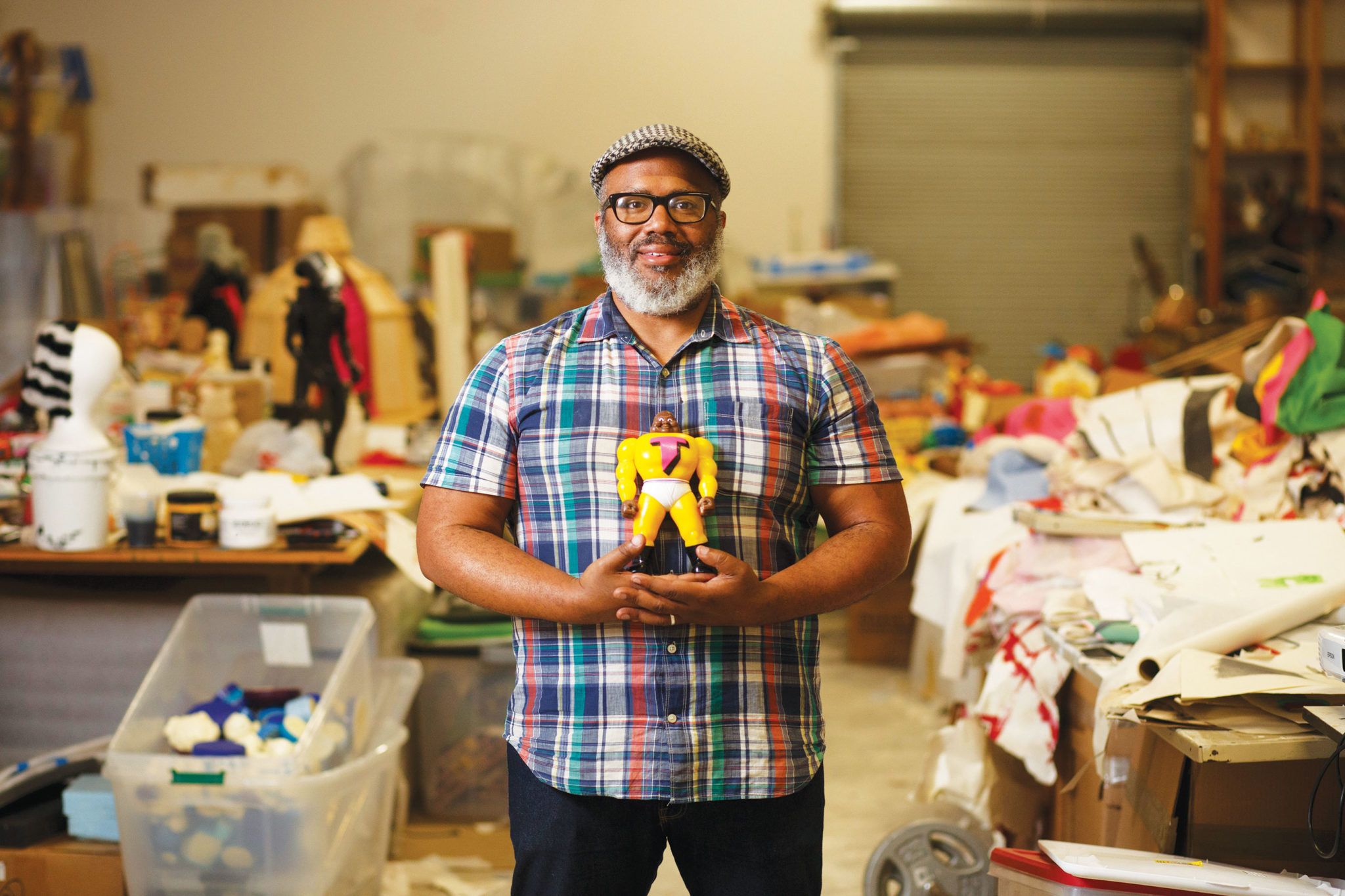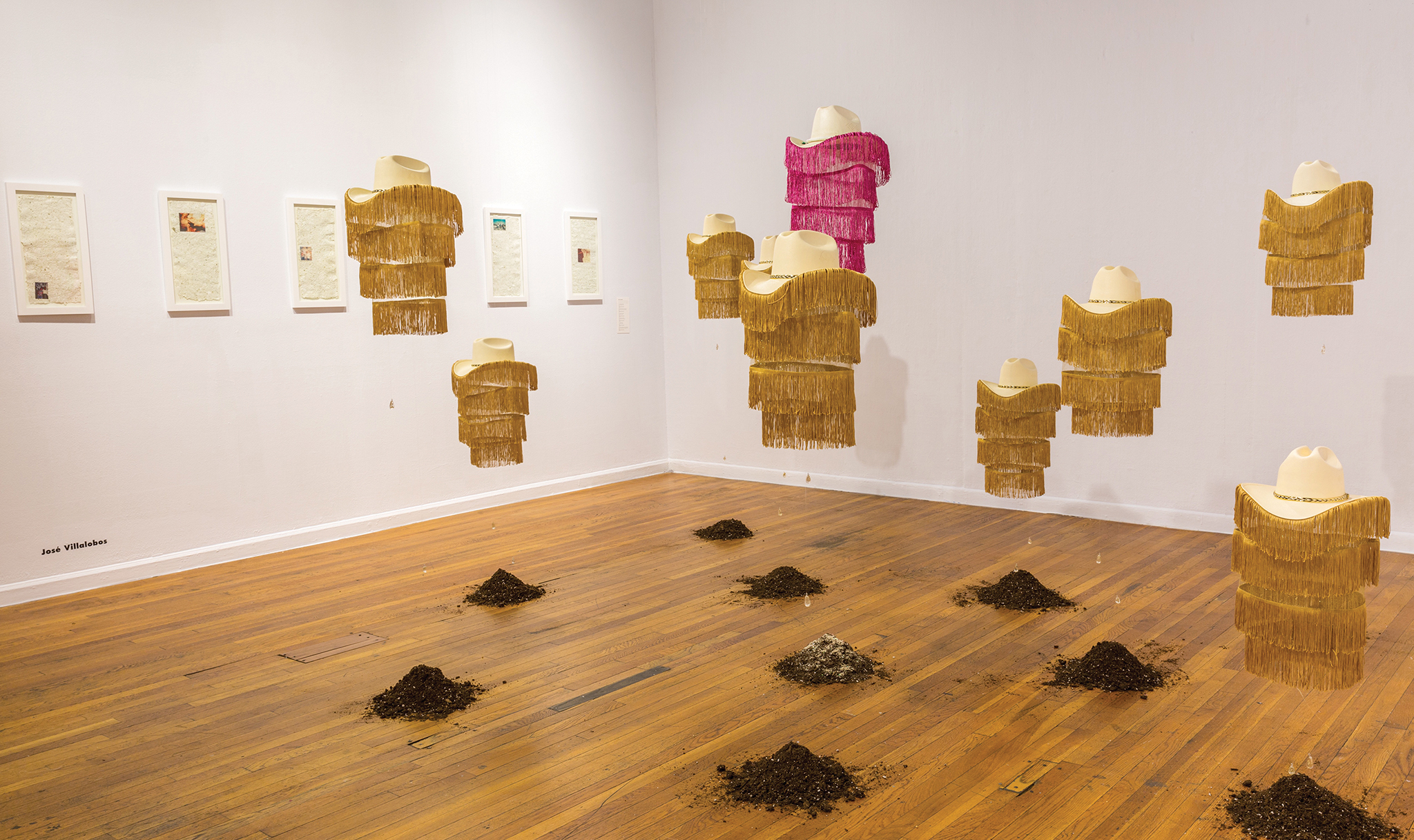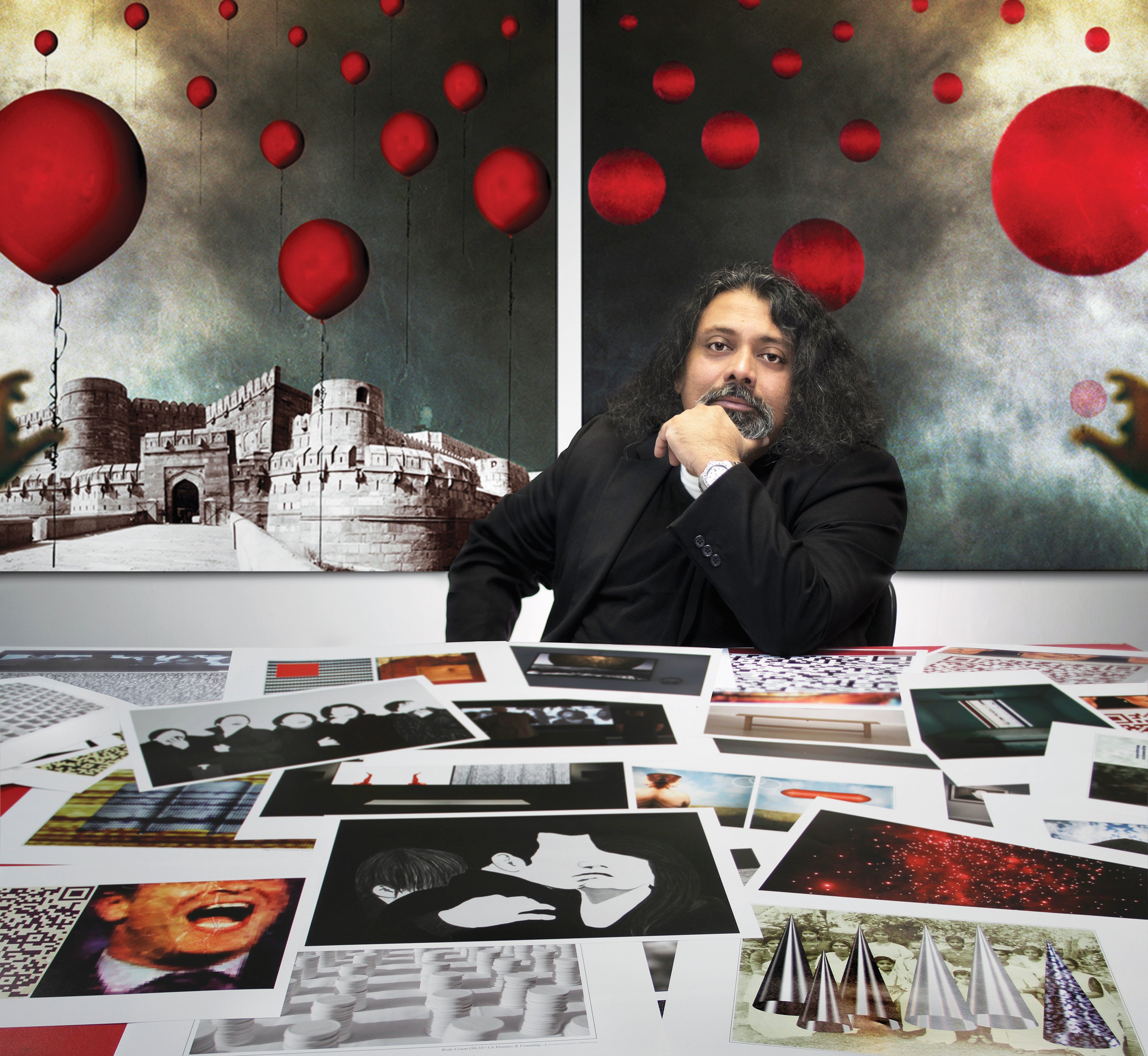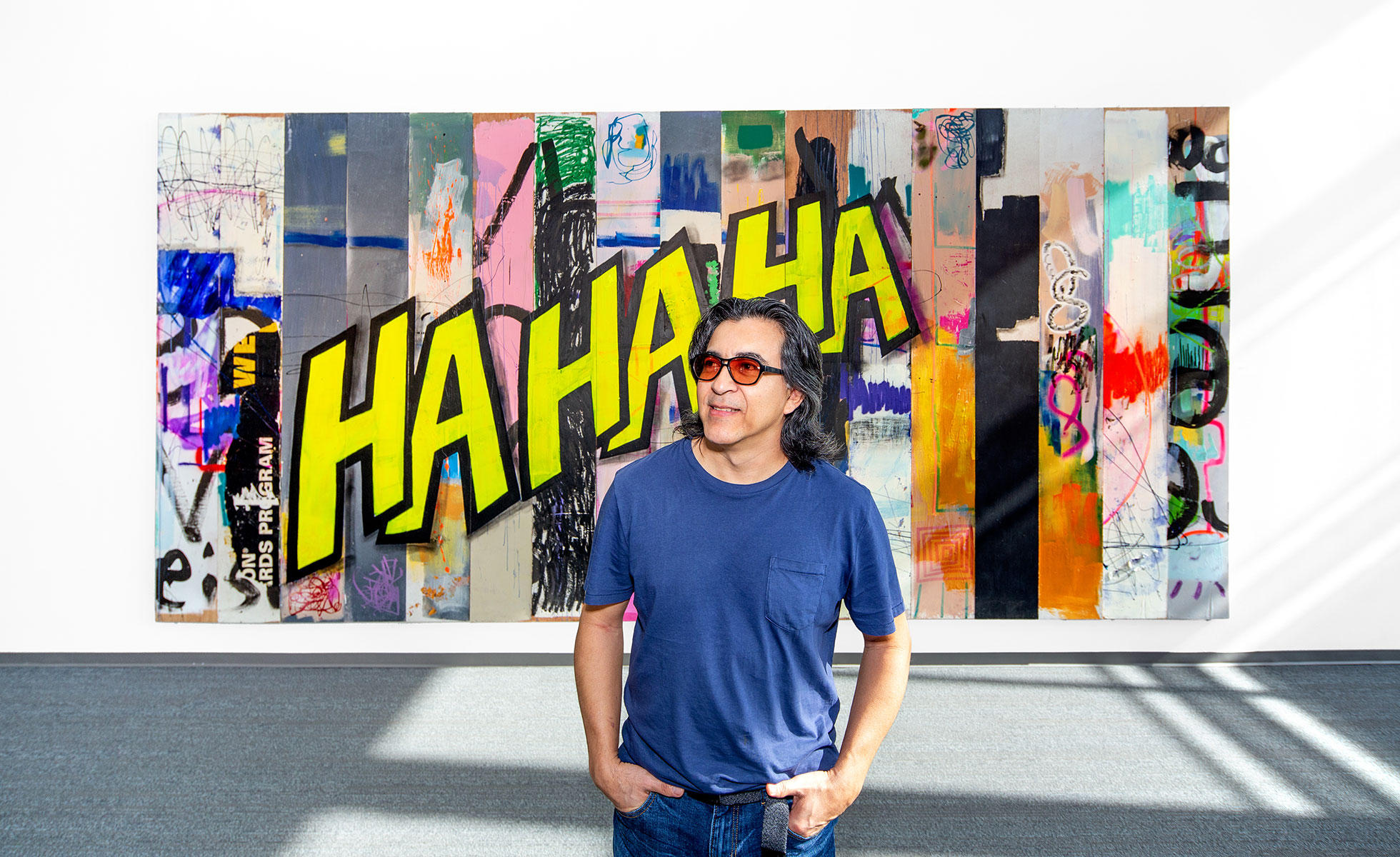
The Fantastic World of Cande Aguilar
The wildly imaginative Brownsville painter fuses pop culture with abstraction, family life, and his love of South Texas.
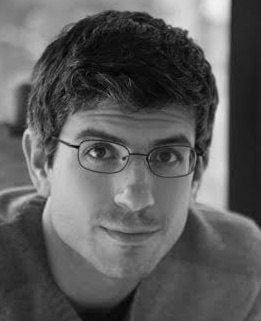
A version of this story ran in the January / February 2020 issue.
When rising Brownsville artist Cande Aguilar was invited to show his work in his first solo New York City exhibition, in September 2019, his excitement was tempered by a major new obstacle: how to ship his large paintings and sculptures across the country. The nearest art handlers he could find were in San Antonio. Just to get them to come to the Rio Grande Valley to pack up his work would add a hefty out-of-route fee.
“The infrastructure, it’s just not here,” he says of life as an artist in Brownsville. “As far as I know, nobody’s ever actually had a solo show in New York being from here, working out of here.”

Eventually, he decided to pack his work into a cargo van and drive three days to deliver it himself. Aguilar is familiar with life on the road, since he spent a decade in a touring conjunto band. He also shows his work regularly in venues across Texas, including in Lubbock during fall 2019 and at the Brownsville Museum of Fine Art this winter. This trip, however, was longer and more emotional than most. Every mile served as a reminder of how far he’d come, how long he’d struggled to break through as an artist making work in and about Texas’ most overlooked big city.
“It definitely feels like a journey,” he says. “In New York, I got emotional every 10 minutes. We drove the cargo van in, and when the owner of the gallery came out to greet us, I started bawling.”
Despite the difficulty of building a national reputation from Brownsville, Aguilar is steadfastly rooted there. His early childhood memories are of the city’s Southernmost barrio, steps from the Rio Grande and Matamoros, Mexico, though he later moved northeast to a newer neighborhood. He remembers his grandmother’s house on Sandia Street, with his uncles’ lowriders out front, the morning wake-up call of roosters, and the half-finished look of some of the homes in the neighborhood. “That’s in the past, to a certain extent,” he says of the barefoot, homemade barrio flavor of his youth. “It was just such a nice time. … It was a time of pure observation, just absorbing everything.”
The fruit of that observation is visible in his intuitive paintings, which meld imagination, memory, and found materials in a freewheeling effort to distill the visual and emotional logic of the barrio. BarrioPOP is the name of the show at New York’s 81 Leonard Street Gallery that Aguilar drove so far to assemble; it is also, more broadly, his name for a specific body of work that he’s been developing for nearly two decades. The paintings he sorts under the barrioPOP heading can incorporate image transfers, often from magazines or his children’s coloring books; snippets of painted text; references to pop-culture and fine-art touchstones ranging from Darth Vader to Vincent Van Gogh; and themes that grapple with border life and culture. A would-be Basquiat of the border, Aguilar melds pop art with abstraction to bring his own corner of the world to life in his studio.
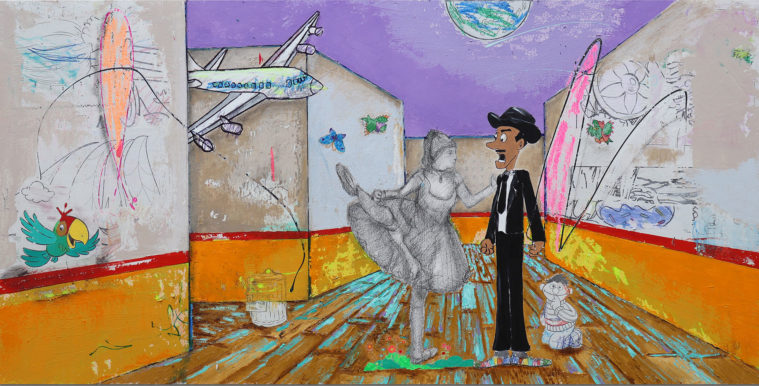
There were no art museums in Brownsville when Aguilar, 47, was growing up. “The mom and pop stores, their hand-painted signs, they were my museum,” he says. “Then the contrast between going to a mom and pop store, and then going later that day to McDonald’s, where everything is so hard-edged, perfectly designed, and the colors are so consistent—that fascinated me.”
Aguilar’s mother worked at El Centro, a grocery store that Aguilar describes as halfway between a true mom and pop and the corporate chain stores that now predominate in the Valley. His father—when not performing onstage as the longtime bass player of conjunto band Gilberto Perez y sus Compadres—occasionally painted houses, bringing the younger Aguilar along to help. “The idea that I had to cover the space evenly, something as basic as that, that’s the foundation of the work,” Aguilar says.
At 6 years old, Aguilar received an accordion as a gift. He treated it as a toy at first, but around age 10, he began to take it more seriously. Aguilar’s godfather, Gilberto Perez, was a prominent conjunto accordionist and his father’s bandleader. For a kid, getting to watch Perez and other members of the band play was “like watching Picasso paint,” Aguilar says. “I experienced these real masters. The access I had to it gave me the confidence to realize I could be an artist. That was the door that I opened and stepped through, and I was in the art world.”
His first entrée into the art world wasn’t painting, but music. Aguilar taught himself to play accordion by studying the great conjunto artists—listening obsessively to his father’s record collection, practicing, and returning to the records when he had questions or wanted to add to his repertoire of styles. Before long, he was able to accompany the Compadres onstage, and at 13 he cut his first album.
In the summer of 1988, after his sophomore year of high school, Aguilar toured with the Grammy-winning Houston band La Mafia. The opening act was a not-yet-famous Selena, who would soon rocket to fame as the ill-fated and much-beloved “Tejano Madonna.” Aguilar captured one of those teenage dressing-room memories in a painting, “Encuentro with an Angel.” The composition shows a well-coiffed cartoon version of himself alongside a ghostly ballet dancer, who leans on his shoulder as she stretches her leg, as if warming up to go out onstage.
After that summer, Aguilar would return home to finish high school, a priority for his family. His fortunes in the music industry never again rose to the same stratosphere as Selena’s, though his band, Elida y Avante, had a good run for nearly a decade, touring consistently and scoring a gold record. They broke up in 2000, shortly after winning several Tejano Music Awards.
The first year after the band’s breakup wasn’t easy for Aguilar. He worked a literal graveyard shift, gardening overnight in a cemetery. “It was hell, after getting off the stage, seeing myself watering a cemetery,” he says. “I was walking around with a broken heart.”
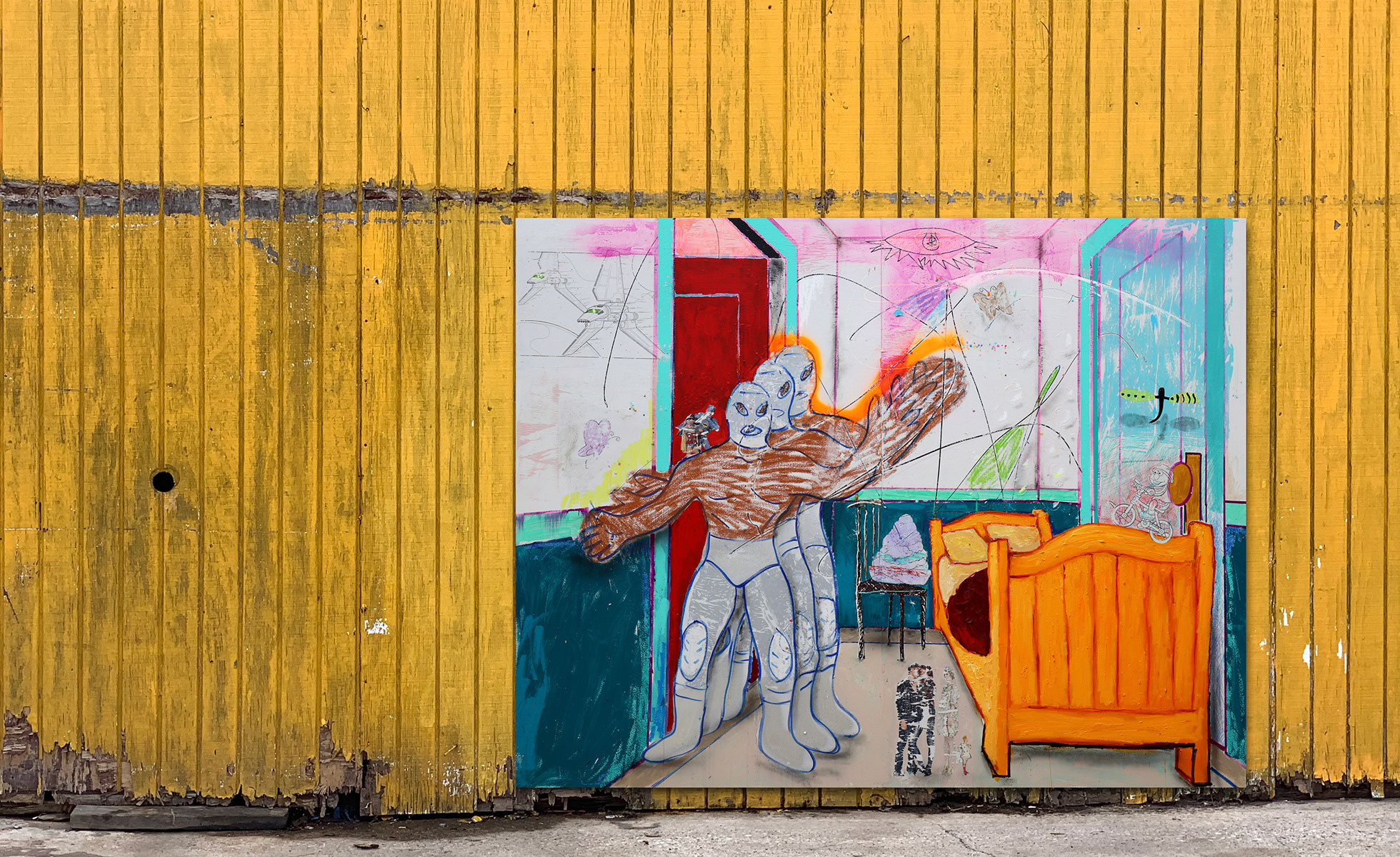
Aguilar worked through his funk by developing his visual art practice, dabbling in the pastels he’d picked up shortly before the band’s breakup. As with the accordion, he taught himself—first imitating the style of the French impressionists, then later Picasso, his fellow Texan Robert Rauschenberg, and the pop artists. Lately, he’s been learning from the work of Jeff Koons and Takashi Murakami. “I think that’s why it’s taken me so long,” he says. “I’ve taken the long way. Maybe if I had gone to art school, I could have jumped in.”
Aguilar says his wife, Sally, a speech pathologist and his “biggest patron,” gave him the support and encouragement to transition into a career in visual art. And he credits his oldest daughter, Sally Marie, now 17, with helping him achieve his first big breakthrough as an artist: moving from straightforward representation into more-abstract modes of composition.
For a long time, Aguilar explains, he felt internal resistance to moving into a style that he knew his community in Brownsville might view with suspicion or even derision. “Part of it was because of the culture here—I could not see myself making an abstract painting, lines and squares and stuff,” he says. “I did not see that happening, because I didn’t think it was true to me or something.”
When Sally Marie was born, however, he became attuned to the way she was taking in the world in terms of pure form and color. “When she was maybe 2 months old, when they start looking around at everything, I noticed how they focus on one thing at a time,” Aguilar says. “That made a lot of sense to me. It was just like, ‘Bam, this is it! What she is looking at is a pure abstraction!’ That’s how I made that connection with abstraction and accepted it.”
Not one to play favorites, Aguilar is quick to note that his other three children taught him art lessons of their own. From Iliana, 15, he says he learned “tenacity, working with what you have.” From David, 10, he learned to look at things poetically. And from the baby of the family, 3-year-old Ella, he says he learned beauty. “I know there are some artists who are not connected to this reality,” he says of family life, which is fundamental not just to his way of working but also to the Brownsville community he aims to represent. “I’m grateful to my family. They keep my feet on the ground. I feel like I’m this normal guy, but I’m also this other weird guy who makes art.”
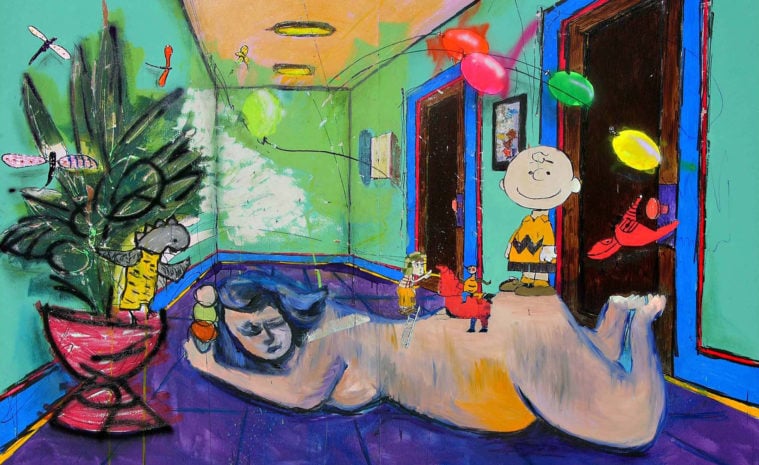
That dual life is evident in his work. One of the first things most viewers will notice about Aguilar’s art is an abundance of image transfers taken from coloring books, many featuring recognizable characters like SpongeBob SquarePants, Mickey Mouse, or Buzz Lightyear. Often his children’s color squiggles will transfer along with the images; Aguilar laments that when he tries to even out their coloring for compositional purposes, he’s incapable of achieving the same “freedom” in his crayon lines.
One striking painting at his Brownsville show, “El Puente Nuevo,” combines several figures from fantasy worlds. The Millennium Falcon—the good guys’ spaceship in the Star Wars universe—is juxtaposed just above an image of a bridge linking Brownsville to Matamoros. Meanwhile, underneath the bridge, two Strawberry Shortcake characters seem to have waded across to Mexico with an offering of pastries. At the foot of the bridge, the otherwise figurative painting gives way to a mess of color.
“Mexico has turned into this abstraction to me,” Aguilar explains. “My kids have never seen Mexico. When I was a kid, we used to go all the time. … It was just like crossing the street.” Aguilar has not set foot over the border since a harrowing experience 12 years ago, when he was accosted by half a dozen men with machine guns. The men separated Aguilar from his wife and forced him to let them search his car. Though neither of them were harmed, the couple has avoided Matamoros ever since. Aguilar says he sees the Millenium Falcon as a symbol of hope, perhaps swooping in to save the day, while the Strawberry Shortcakes bring peace in the form of baked goods.
It’s probably unwise, however, to be too literal-minded in picking apart Aguilar’s paintings for narrative, symbolic, and political meaning. Perusing his recent paintings, it’s less interesting to guess exactly what each of them means than to simply stand in front of them and let them work their magic. Little shards of recognizable cultural reference points direct us here or there—a lucha libre wrestler, Van Gogh’s bed from “Bedroom in Arles,” a man identified as “El Dreamer” with a soccer ball for a head, Elmo on a bike, a balloon recalling Banksy, a portrait of the San Antonio artist Jose Villalobos, faded signage advertising Tex-Mex food. But it’s up to us to either make meaning or flow on into the next piece.
Aguilar’s Brownsville Museum of Fine Art show is called Ni de Aquí, Ni de Allá (From Neither Here Nor There). It encapsulates a sense of dislocation caused by living on the border, the feeling of not belonging fully to either nation. He links the title to a pivotal scene in the biopic Selena, in which the star’s father tells her she must work twice as hard, because of where she was born, to make people on either side of the border happy.
But the exhibition title also might be taken as a lighthearted comment on where Aguilar’s ideas come from: the deep subconscious, the lost world of childhood, the flotsam and jetsam of parenthood, or who knows where. “I’m self-taught, so I pick up on things that I feel,” Aguilar says. “They compel me somehow, some way. So I trust that, and so I go with it.”
Top image: “El Puento Nuevo,” 2019, multimedia painting with image transfer on panel.
Read more from the Observer:
-
Everyone Wants to End Surprise Medical Billing in Texas, but No One Wants to Pay for It: New patient protections go into effect January 1, but a last-minute rulemaking controversy illustrates how hard it is to fix even a relatively narrow health care problem.
-
How Katharine Hayhoe Stays Hopeful as the Planet Warms: The Texas Tech professor and lead author on the last three National Climate Assessments wants you to talk about how to live in a warming world.
-
Why I Started a Book Club in the Harris County Jail: Education programs make jails safer and reduce rates of recidivism when people reenter society.

